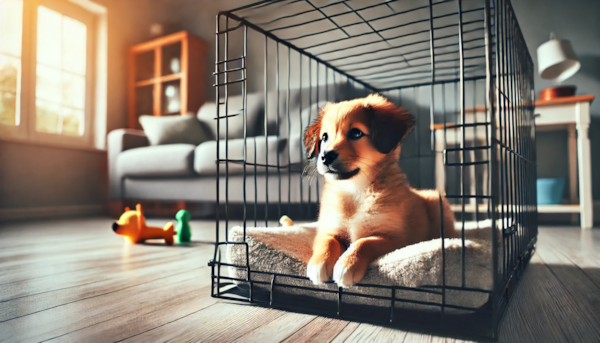
Crate training is a fundamental aspect of raising a well-behaved dog. It’s not only useful for housebreaking but also serves as a way to ensure your dog’s safety when you can’t provide direct supervision. This article will walk you through the essential techniques, along with the dos and don’ts of crate training, to help you create a positive experience for your dog.
Table of Contents
Understanding the Basics of Crate Training
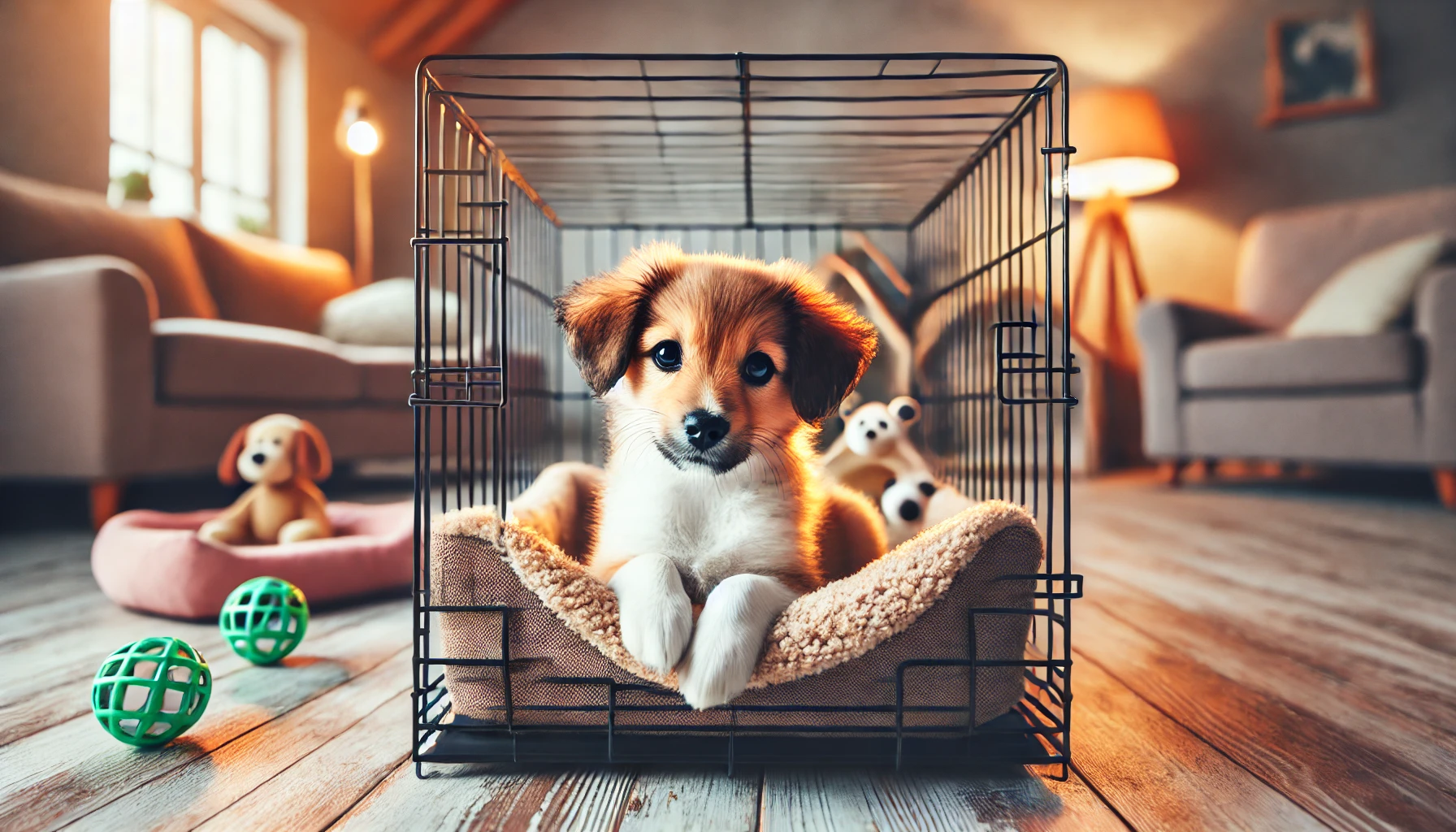
Why Crate Training is Important
Crate training is more than just a way to manage your dog’s behavior, it’s also a method to provide your pet with a personal space, a sanctuary where they feel secure and relaxed. It’s beneficial for house training, as dogs naturally avoid soiling their den. Moreover, a crate is invaluable for ensuring safety during travel and when unsupervised. Proper crate training can also help reduce separation anxiety by creating a haven for your dog when you’re away.
Selecting the Right Crate for Your Dog
Choosing the appropriate crate is crucial for successful crate training:
- Size: The crate should be large enough for your dog to stand, turn around, and lie down comfortably, but not so large that they can use one end as a bathroom.
- Material: Crates come in different materials, including wire, plastic, and fabric. Wire crates are durable and provide good ventilation, plastic crates are cozy and approved for airline travel, and fabric crates are lightweight but better for dogs already accustomed to crates.
- Location: Place the crate in a living area where your dog feels part of the family and can see familiar surroundings but avoid overly busy or loud areas to prevent stress.
Techniques for Successful Crate Training
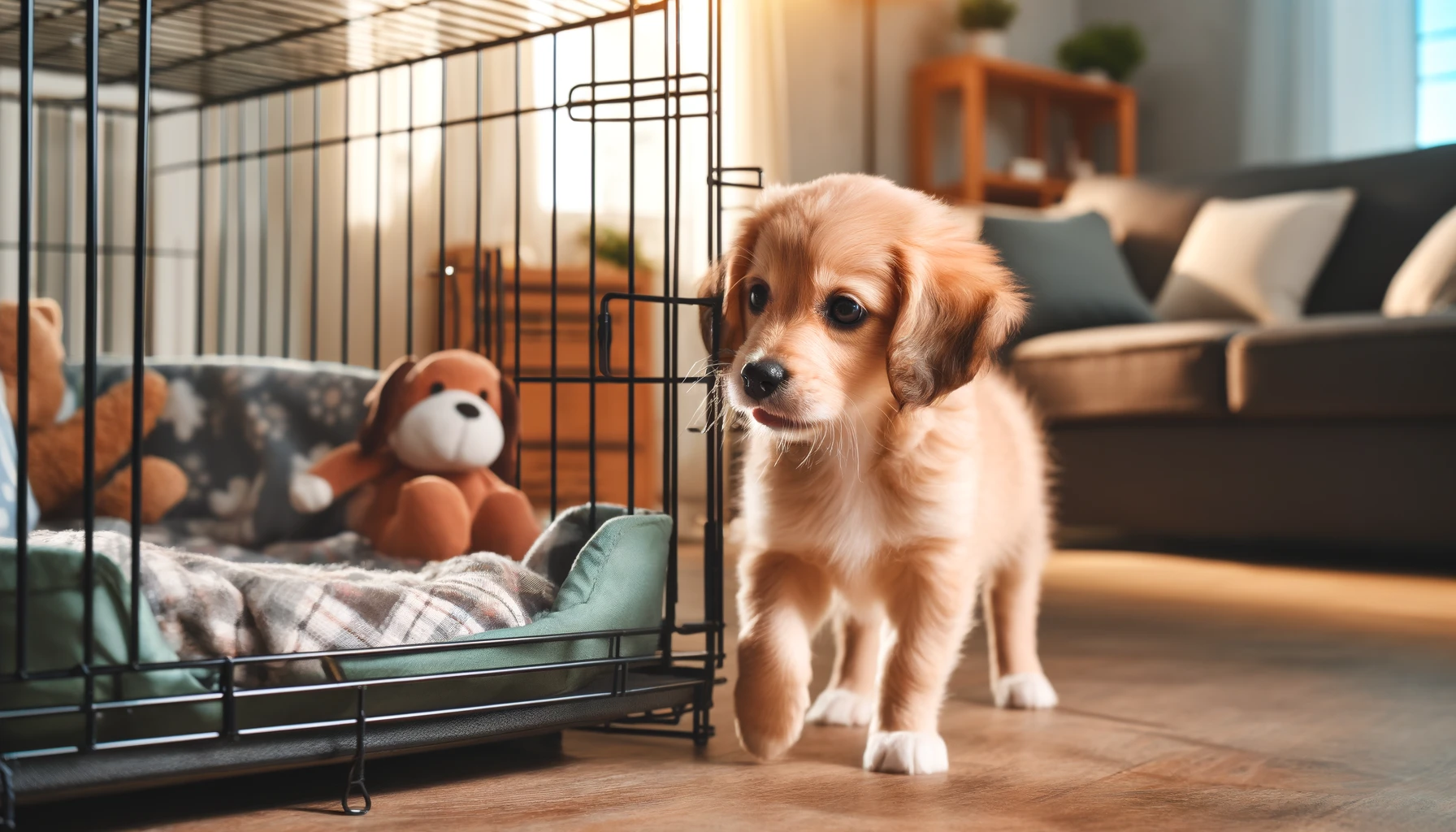
Introducing Your Dog to the Crate
Successfully introducing your dog to the crate is pivotal. The goal is to make the crate an appealing place where your dog chooses to spend time.
- Open Invitation: Start by placing the crate in a common area with the door open. Encourage exploration with treats and favorite toys placed inside.
- Feed Meals Inside: Begin feeding your dog their regular meals near the crate, then try moving the food bowl inside. This associates the crate with positive experiences.
- Calm Departures: When you begin closing the door, start with very short periods while you are home and gradually increase the time. Keep departures and returns low-key to avoid creating anxiety around your absence.
Establishing a Positive Association with the Crate
Building positive associations with the crate is essential for its acceptance by your dog.
- Comfort is Key: Equip the crate with comfortable bedding and safe toys to make it a cozy spot that your dog enjoys.
- Reward Quiet Behavior: When your dog is in the crate and calm, offer treats and praise to reinforce this desired behavior.
- Regular Practice: Consistency helps your dog learn that the crate is a regular part of their routine. Practice crating at various times throughout the day, not just when you're about to leave the house.
Dos of Crate Training
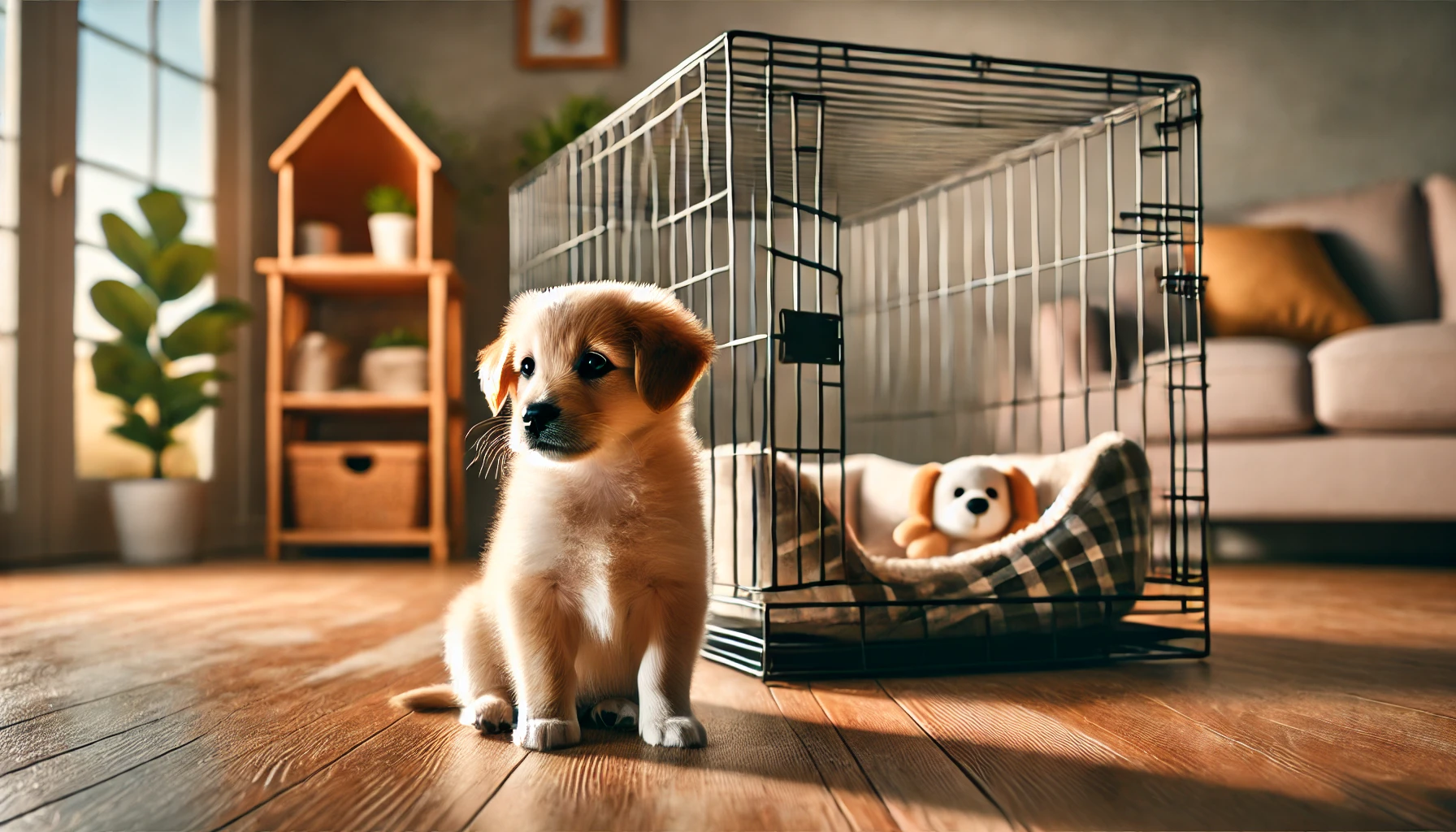
Properly implementing crate training involves several "dos" that ensure a positive experience for your dog.
Do Make the Crate Comfortable and Inviting
- Soft Bedding: Provide soft, comfortable bedding inside the crate. If your dog has a favorite blanket or pillow, place it inside to make the space feel more familiar and secure.
- Accessibility to Water: Especially for longer durations, make sure your dog has access to water. Attach a water bottle or a spill-proof bowl to the crate.
- Proper Ventilation: Ensure the crate is well-ventilated and kept in a temperature-controlled environment to prevent your dog from feeling too hot or too cold.
Do Use Consistent Commands
- Crate Command: Use a consistent command like "crate" or "bed" every time you want your dog to enter the crate. Accompany this command with a gesture or point towards the crate.
- Positive Reinforcement: Always reward your dog for following the command and entering the crate willingly, using treats, praise, or their favorite toys.
Do Consider Your Dog's Age and Bladder Control
- Puppies: Remember that puppies cannot hold their bladder for long periods, so crate time should be adjusted accordingly. Generally, the guideline is that puppies can control their bladder for one hour for every month of age, plus one.
- Adult Dogs: Most adult dogs can stay in a crate for up to 8 hours but shouldn't be left longer than this without a break to stretch and relieve themselves.
Don'ts of Crate Training
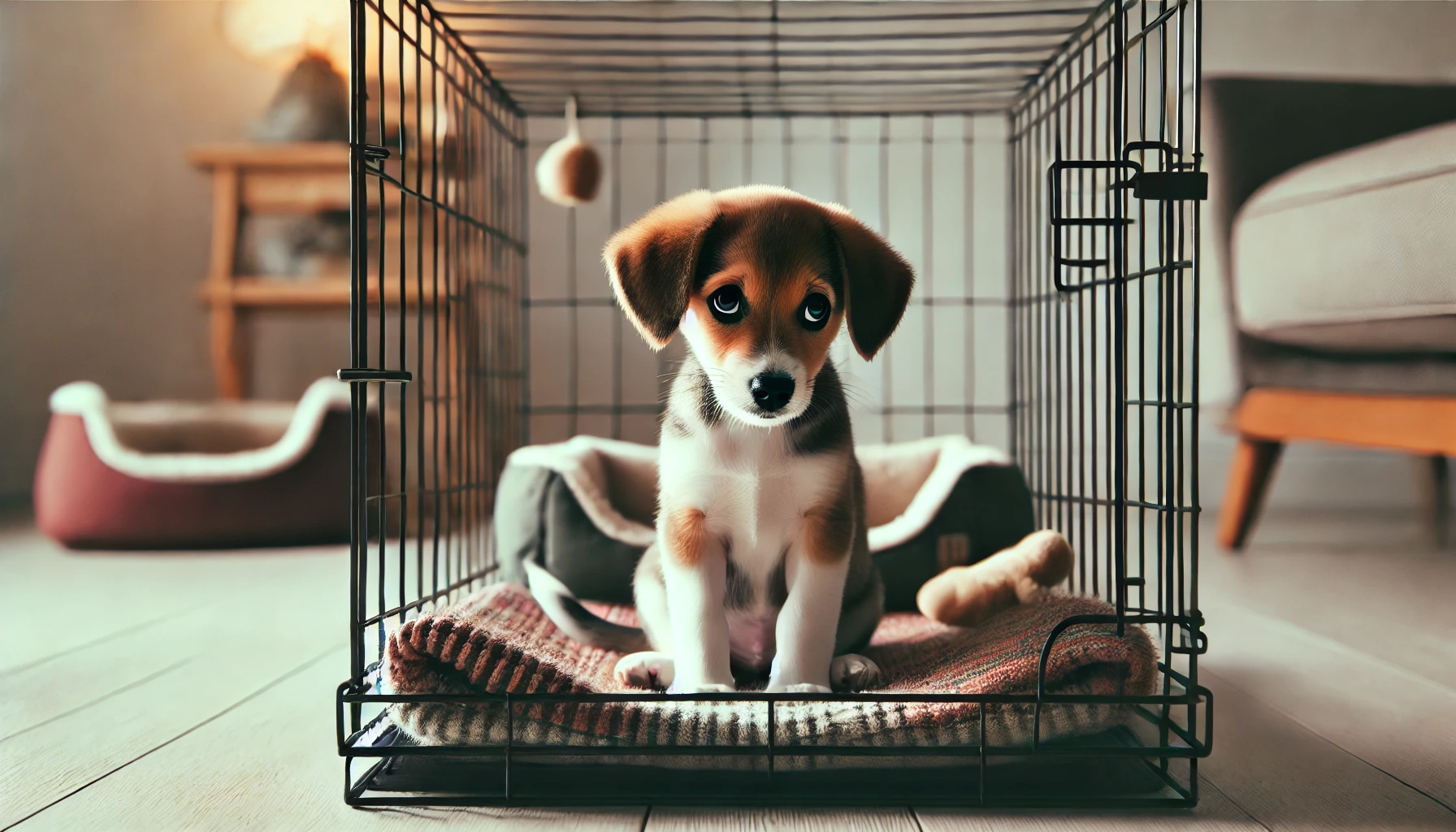
Avoiding certain practices is just as important as implementing the right ones to ensure crate training is successful and humane.
Don't Use the Crate as Punishment
- Negative Association: Never send your dog to the crate as a punishment. If the crate becomes associated with negative emotions or as a place of isolation, your dog may start to resist entering it or experience anxiety when crated.
- Positive Space: Always ensure that interactions involving the crate are positive. If your dog needs a timeout, consider alternative solutions that do not involve the crate.
Don't Leave Your Dog in the Crate for Too Long
- Extended Periods: Leaving a dog crated for too long can lead to anxiety, depression, and even physical issues like muscle atrophy or bladder infections. Ensure your dog has ample time out of the crate each day to move, stretch, and interact with humans and other pets.
- Breaks Are Necessary: Provide regular breaks for your dog to relieve themselves and exercise. Puppies need more frequent breaks to go outside.
Don't Ignore the Need for Exercise and Interaction
- Physical and Mental Stimulation: Dogs need regular exercise and mental stimulation to stay healthy and happy. Ensure that your dog’s schedule includes sufficient playtime, walks, and interaction with you outside of the crate.
- Social Needs: Dogs are social animals and require interaction. Neglecting this need can exacerbate feelings of isolation when crated.
Troubleshooting Common Crate Training Issues
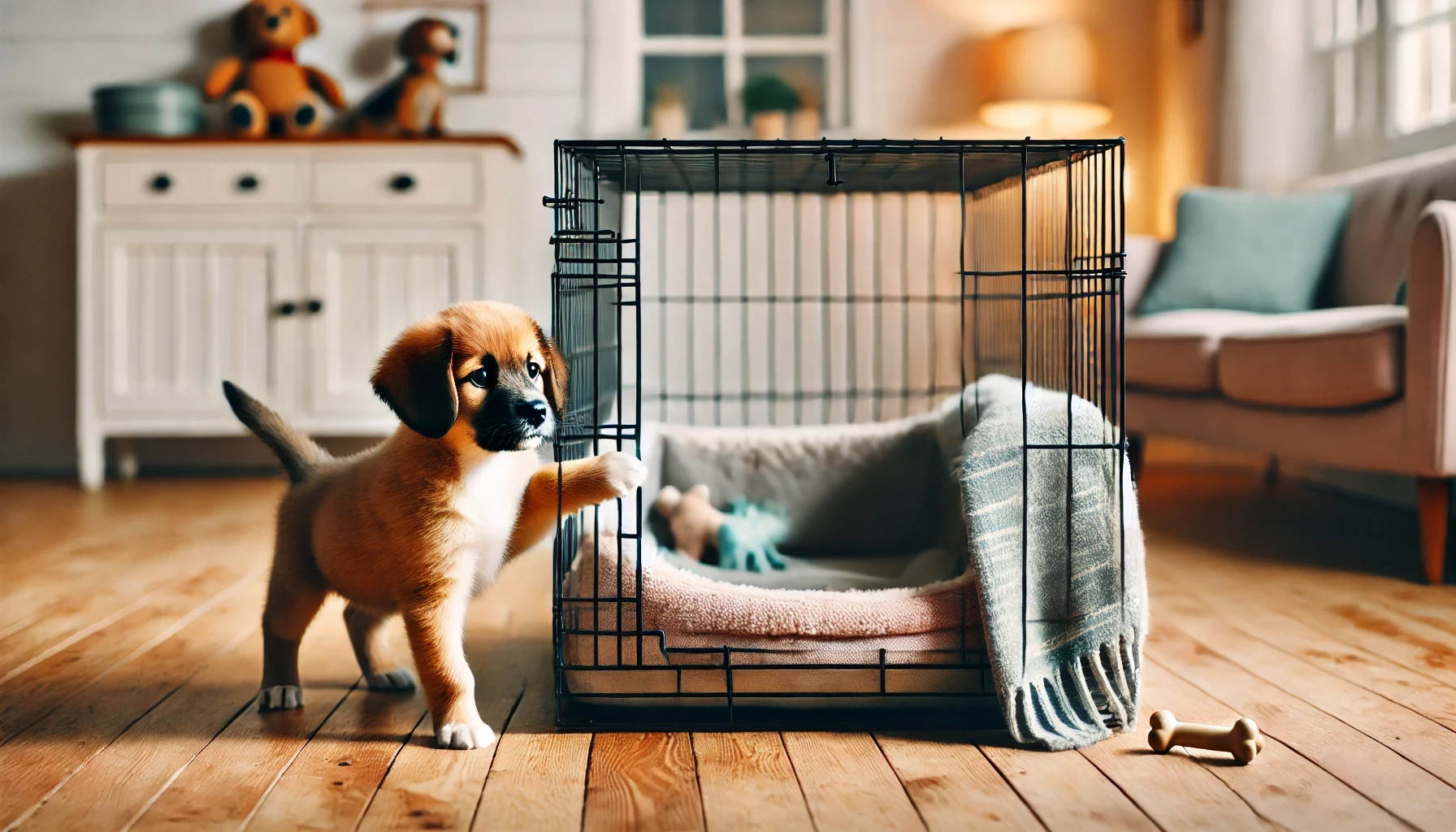
Even with the best practices, you might encounter some challenges during crate training. Here’s how to effectively handle these situations.
Handling Whining or Barking
- Ignore Initial Whining: If your dog whines or barks when first placed in the crate, it’s important to resist the urge to let them out immediately. Doing so can teach them that crying leads to release. Instead, wait until they have calmed down before you open the crate.
- Check for Needs: Ensure that their whining isn’t because they need to go out for a bathroom break, especially with puppies. Always give your dog ample opportunities to relieve themselves before crating.
What to Do If Your Dog Refuses to Enter the Crate
- Reassess the Environment: Make sure the crate is comfortable and inviting. Review if there is something inside or about the crate that might be deterring your dog.
- Reinforce Positive Associations: Increase the positive reinforcement for entering the crate. Use high-value treats to lead your dog into the crate and reward them generously once inside. You can also try feeding them their meals in the crate to build a stronger association.
- Gradual Acclimation: If your dog shows signs of anxiety, take steps back in the training process. Spend more time with the door open and allow your dog to enter and exit freely until they are more comfortable.
Advanced Crate Training Tips

Once your dog is comfortable with basic crate training, you can introduce more advanced techniques to make the crate an integral and positive part of their life.
Gradual Acclimation to Longer Periods
- Incremental Increase: Gradually extend the amount of time your dog spends in the crate while you are at home. This helps your dog get used to being alone without feeling abandoned.
- Routine Establishment: Create a routine where your dog expects to spend part of the day in the crate. This predictability can reduce anxiety and establish a calm expectation of quiet time.
Using the Crate for Travel and Vet Visits
- Travel Preparation: If you plan to travel with your dog, use the crate for short local trips first, like driving to a nearby park. This builds a positive association with travel and helps reduce anxiety during longer trips.
- Vet Visits: Familiarize your dog with being in the crate for periods that might approximate waiting times at the vet. This can make vet visits less stressful as your dog perceives the crate as a safe space, even outside the home.
Crate Games and Exercises
- Find It Games: Hide treats in the crate for your dog to find. Turn crate time into a fun search and reward activity.
- Quiet Time Training: Encourage calm and quiet behavior in the crate by rewarding your dog when they rest quietly without prompts. This reinforces the crate as a peaceful retreat.
Conclusion
Crate training, when done properly, offers numerous benefits for both dogs and their owners. It provides a haven for your dog, aids in house training, and ensures their safety during travels and unsupervised moments. The key to successful crate training lies in making the crate a positive, comfortable space and using it responsibly to enhance, not restrict, your dog’s life.
Recap of the Importance and Benefits of Crate Training
- Safety and Security: The crate serves as a secure space where your dog can relax and stay safe when you can't supervise them directly.
- Aids in Housebreaking: Crate training is highly effective for establishing a housebreaking routine, as dogs naturally avoid soiling their sleeping area.
- Reduces Anxiety: Properly introduced, the crate can help reduce separation anxiety by providing a familiar and secure environment.
Remember, the goal of crate training is to create a positive, safe environment for your dog, not to confine them unnecessarily. With the right approach, your dog will come to see their crate as a personal den, a place they value and enjoy spending time in.
Scroll down to see FAQs about puppy crate training.
What To Read Next
Potty Training Guide
Puppy Leash Training Guide
Frequently Asked Questions
How long can I leave my dog in the crate during the day? The duration should depend on the dog's age, size, and ability to control their bladder. Puppies should only be crated for their age in months plus one hour maximum. For adult dogs, 8 hours is generally the maximum time advised, but breaks every few hours are recommended to stretch and relieve themselves.
Is it cruel to crate a dog at night? Crating a dog at night is not cruel if done correctly. It can provide a safe and comfortable place for them to sleep throughout the night. Ensure the crate is comfortable with adequate bedding, and that your dog has had enough exercise and a chance to relieve themselves before bedtime.
Can crate training help with anxiety? Yes, when done properly, crate training can provide a secure space where your dog feels safe and calm, which can help reduce anxiety. However, if your dog shows signs of distress or anxiety when crated, it’s important to reassess your training approach and possibly consult a professional.
What should I do if my dog has an accident in the crate? Clean it up promptly using an enzymatic cleaner to remove odors and discourage future accidents. Evaluate the reasons behind the accident—whether it was due to being left in the crate too long without a break, illness, or a lapse in house training—and adjust your routine accordingly.
How should I phase out crate training? Once your dog demonstrates consistent good behavior and seems comfortable being left alone, you can gradually increase the time they spend outside the crate while you’re away. Start by leaving them in a safe, dog-proofed area of your home for short periods and gradually increase as they show they can handle it.



